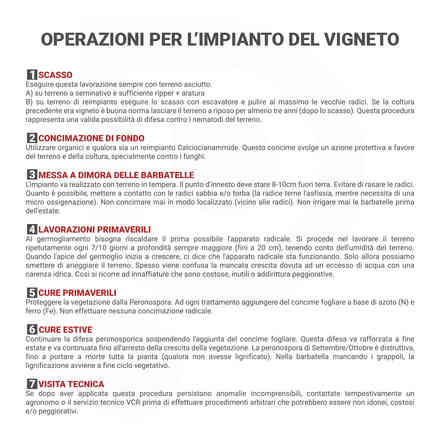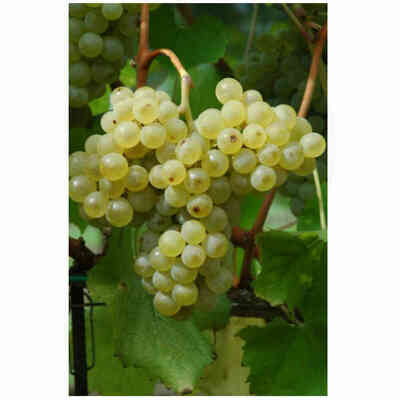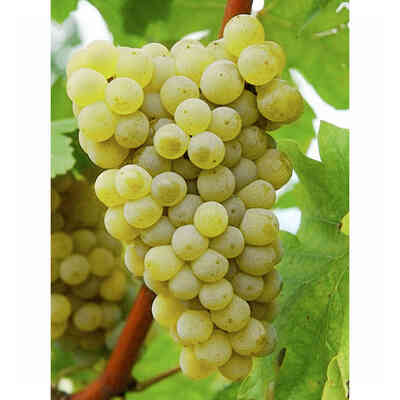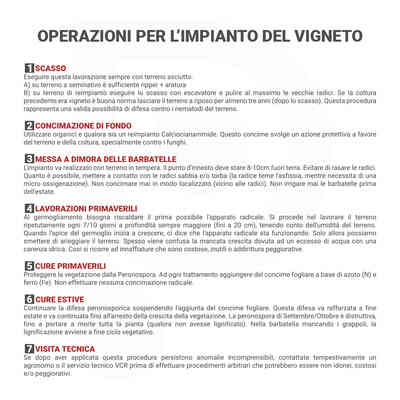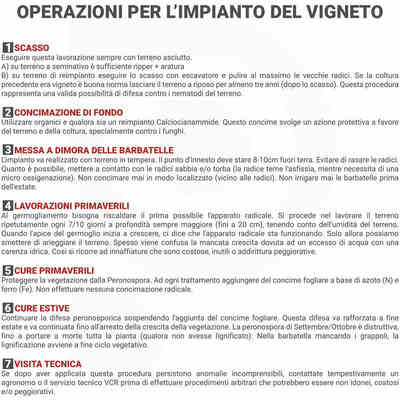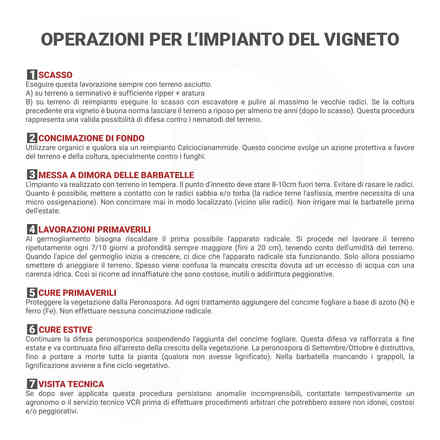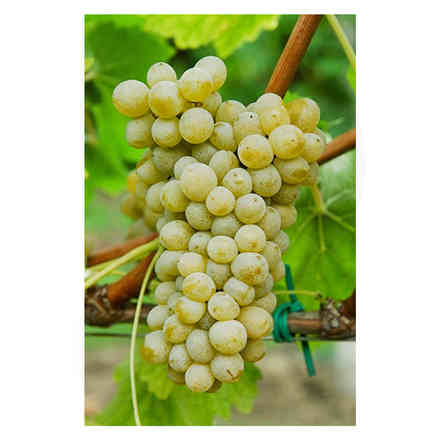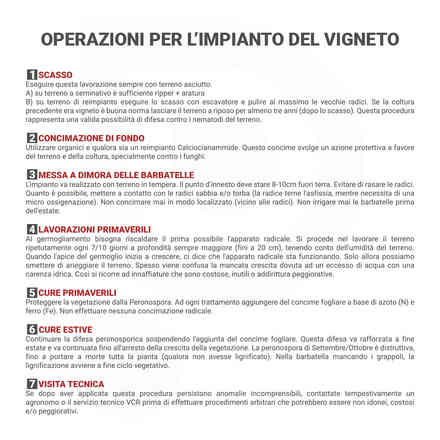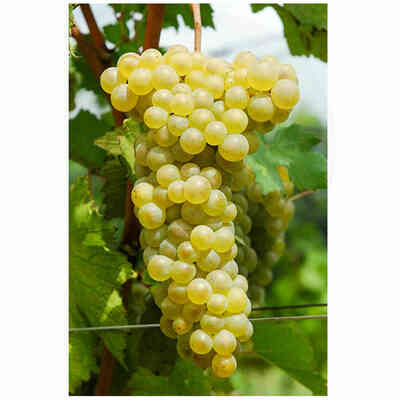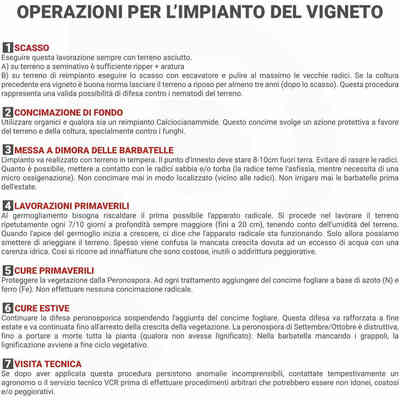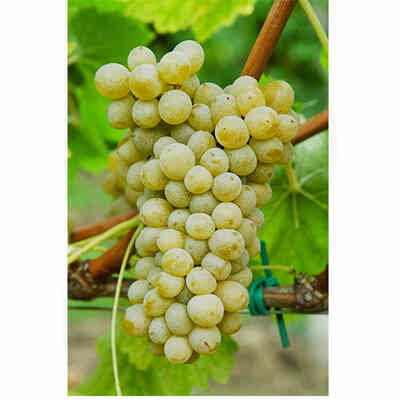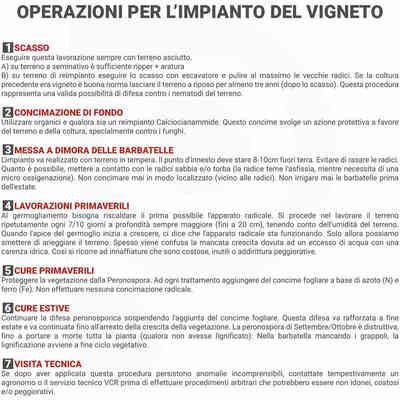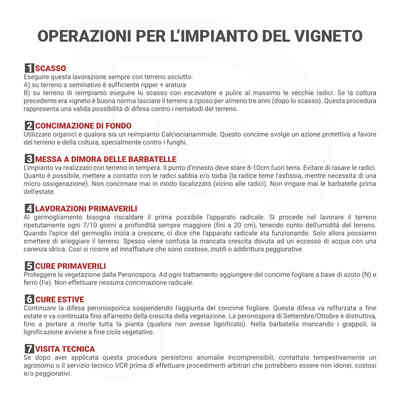Grechetto (10 pcs)
Description
 AUTHORIZED RETAILER
AUTHORIZED RETAILER
Grechetto (10 PCS)
Rootstocks: 1103P - K5BB - S04 - 140RU - 420A (We will send the graft carrier available at the moment)
Grechetto bianco refers to the Orvieto biotype, while the Todi biotype or Grechetto Gentile is synonymous with Pignoletto.
- Ampelographics: not a very homogeneous variety, often confused with other varieties and in any case characterised by the presence of several biotypes that differ in vigour and bunch conformation. Fan-shaped, downy, pale green shoot. The leaves are medium-sized, elongated, pentagonal and quinquelobate. Petiolar sinus V-U or lyre-shaped, more or less open, moderately deep. Upper leaf blade blistered or rough. Main nerves with slight tomentum, tufted on the underside especially at the insertions, petiole long, slightly shaded with pale pink. Cluster medium-small, cylindrical-conical with or without wings, tight. Berry: medium-sized, oval, with thin, consistent, pruinose, yellowish skin; simple, sweet pulp.
- Cultivation requirements: vine of medium vigour with drooping vegetation. It adapts well to hilly soils, which tend to be heavy, even slightly chalky.
- Cultivation and pruning: adapts to expanded forms of cultivation and medium-long pruning.
- Sprouting time: medium.
- Ripening time: medium.
- Production: medium and constant.
- Sensitivity to disease and adversity: ensible to botrytis, less so to downy mildew and powdery mildew. Tolerant to winter cold and late spring frosts.
- Oenological potential: gives a wine with greenish reflections, good acidity, with a delicate aroma of fruit, especially apple and pear. Suitable for the production of pure wines or also in blends to give finesse and aromaticity.
Clones in multiplication: Grechetto VCR2, G109ISVICAPG.
CULTIVATED AREA IN ITALY
YEAR 1970 1982 1990 2000 2010
HECTARES 966 903 949 1203 1186
RULES TO PLANT A VINEYARD
1. PLOW
You must perform this operation always with dry soil
A) On arable land is generally sufficient to ripper + to plow
B) On planting soil is generally sufficient to plow with an escavator and to clean the old roots.
If the previous crop was a vineyard, it is a good idea to leave the soil fallow for at least three years (after plowing). This procedure represents a valid possibility of defence against soil nematodes.
2. SOIL FERTILIZATION
Use organics and if it is a reimplantation, use Calciumocyanamide.
This fertiliser has a protective effect on the soil and the crop, especially against fungi.
3.PROPAGATING GRAPE VINE CUTTINGS
The planting should be carried out in temperate soil. The grafting point should be 8-10 cm above ground. Avoid shaving the redices. As much as possible, put sand and/or peat in contact with the roots (the root fears asphyxiation, while it needs a micro-oxygenation). Never fertilize in a localized manner (near the roots). Never water the rooted cuttings before summer.
4.SPRING WORKS
When sprouting, the root apparatus must be heated as soon as possible. Work the soil repeatedly every 7/10 days at increasing depth (up to 20 cm), taking into account the moisture of the soil. When the apex of the bud starts to grow, it means that the root system is functioning. Only then can we stop watering the soil. Failure to grow due to access to water is often confused with a lack of water. This is why watering is used which is expensive, useless or even worse.
5.SPRING CURE
Protect vegetation from Peronospora. To each treatment add nitrogen (N) and iron (Fe) foliar fertilizer. Do not make any radical fertilization.
6.SUMMER CURE
Continue with the defense against Peronospora by suspending the addition of the foliar fertilizer. This defense should be reinforced in late summer and should be continued until vegetation growth stops.
The September/October blight is destructive, to the point of bringing death to the whole plant (if it has not lignified). The rooted vine lacks clusters, so lignification occurs at the end of the vegetative cycle.
7.TECHNICAL VISIT
If incomprehensible anomalies persist after this procedure, contact an agronomist or the VCR Technical Service promptly before carrying out arbitrary procedures which may be unsuitable, expensive and/or worsening.






















